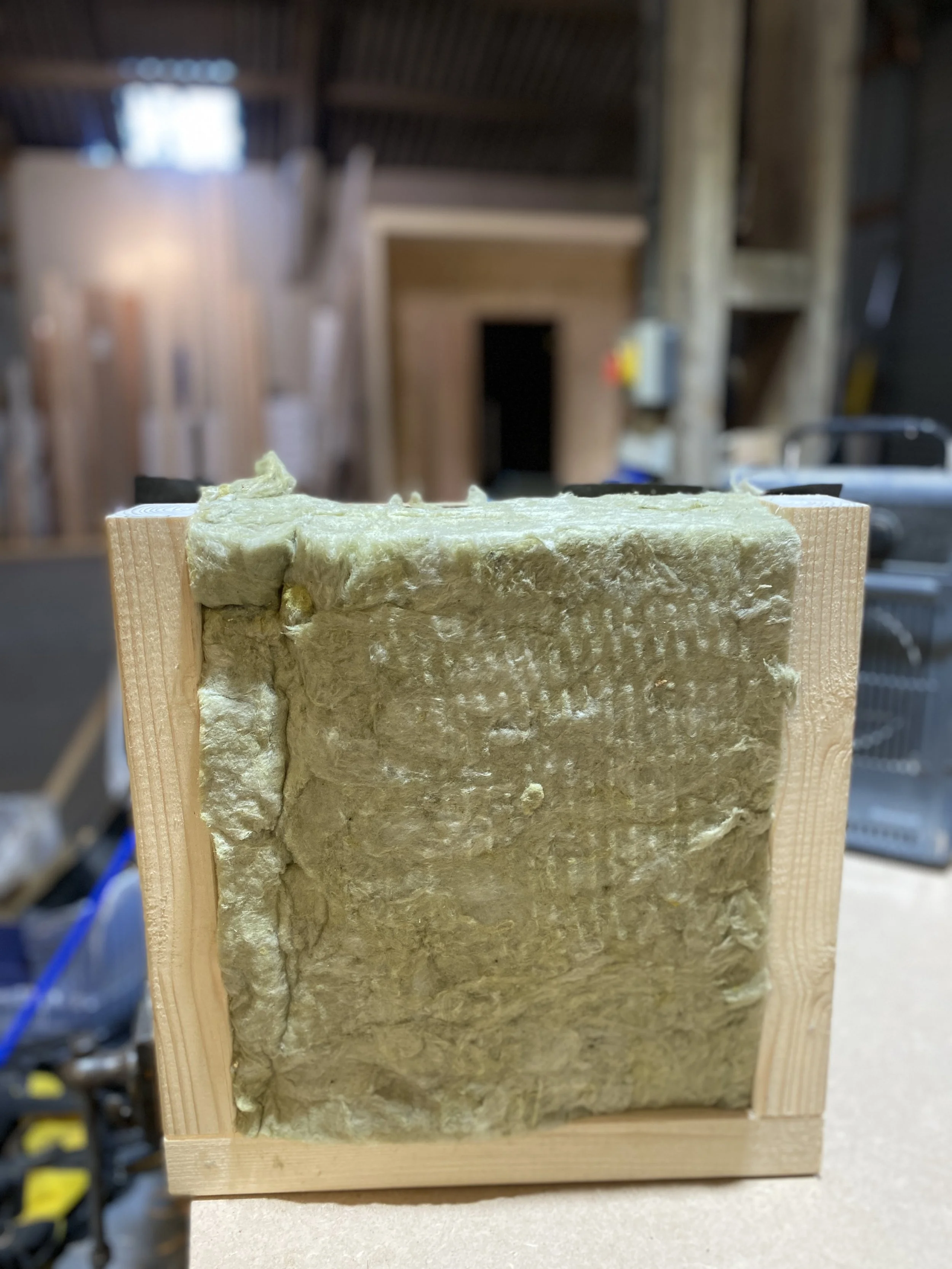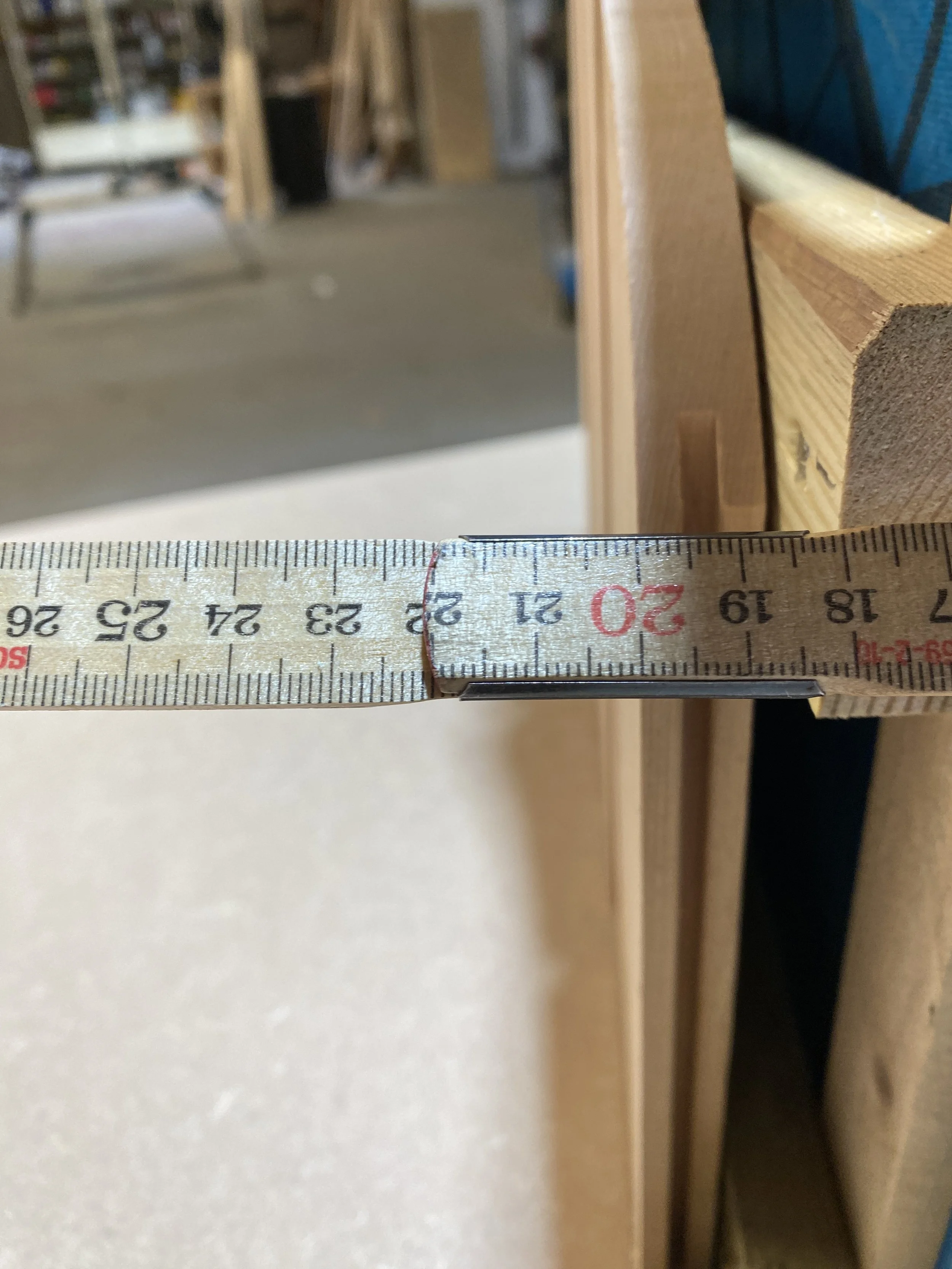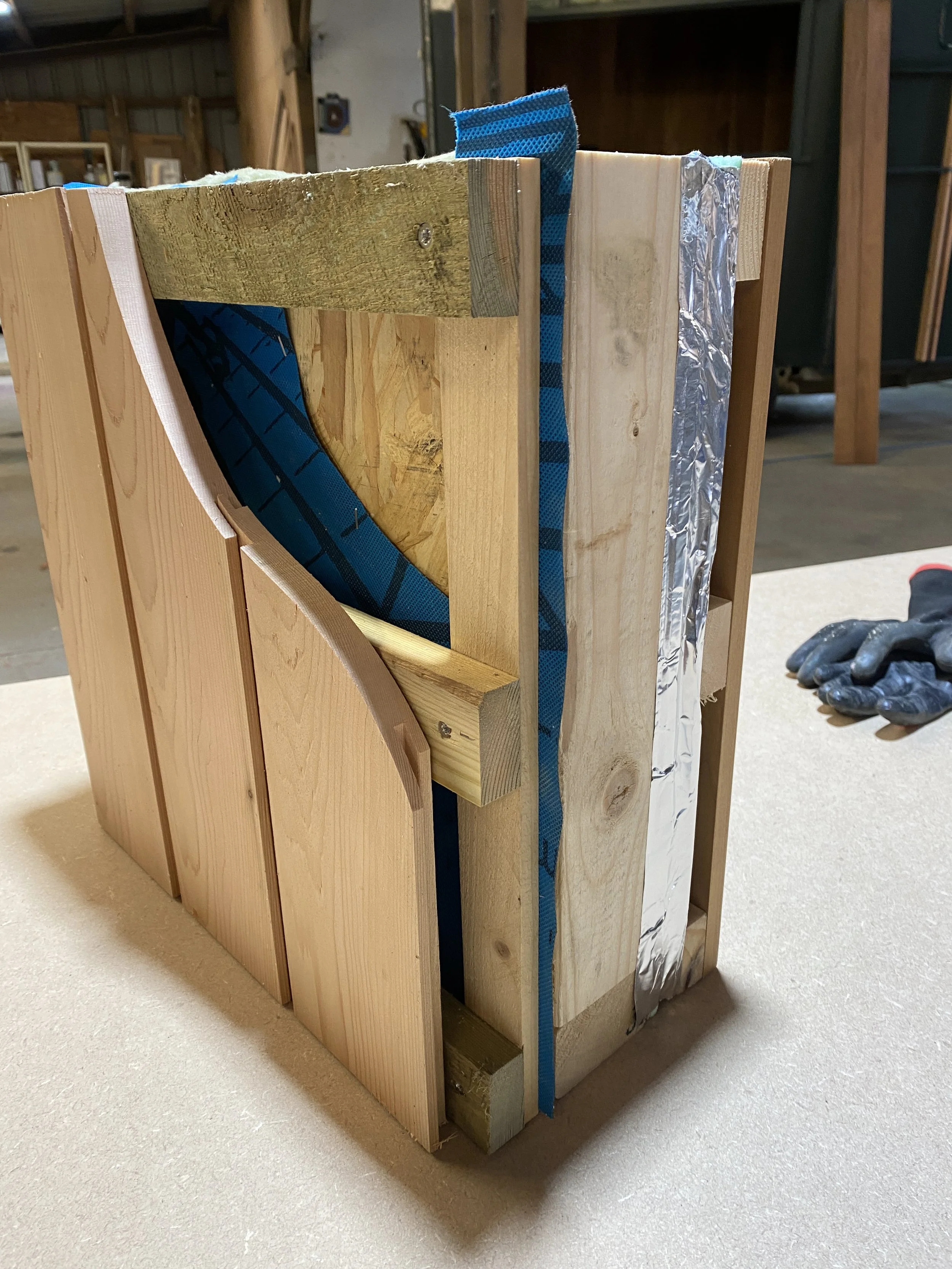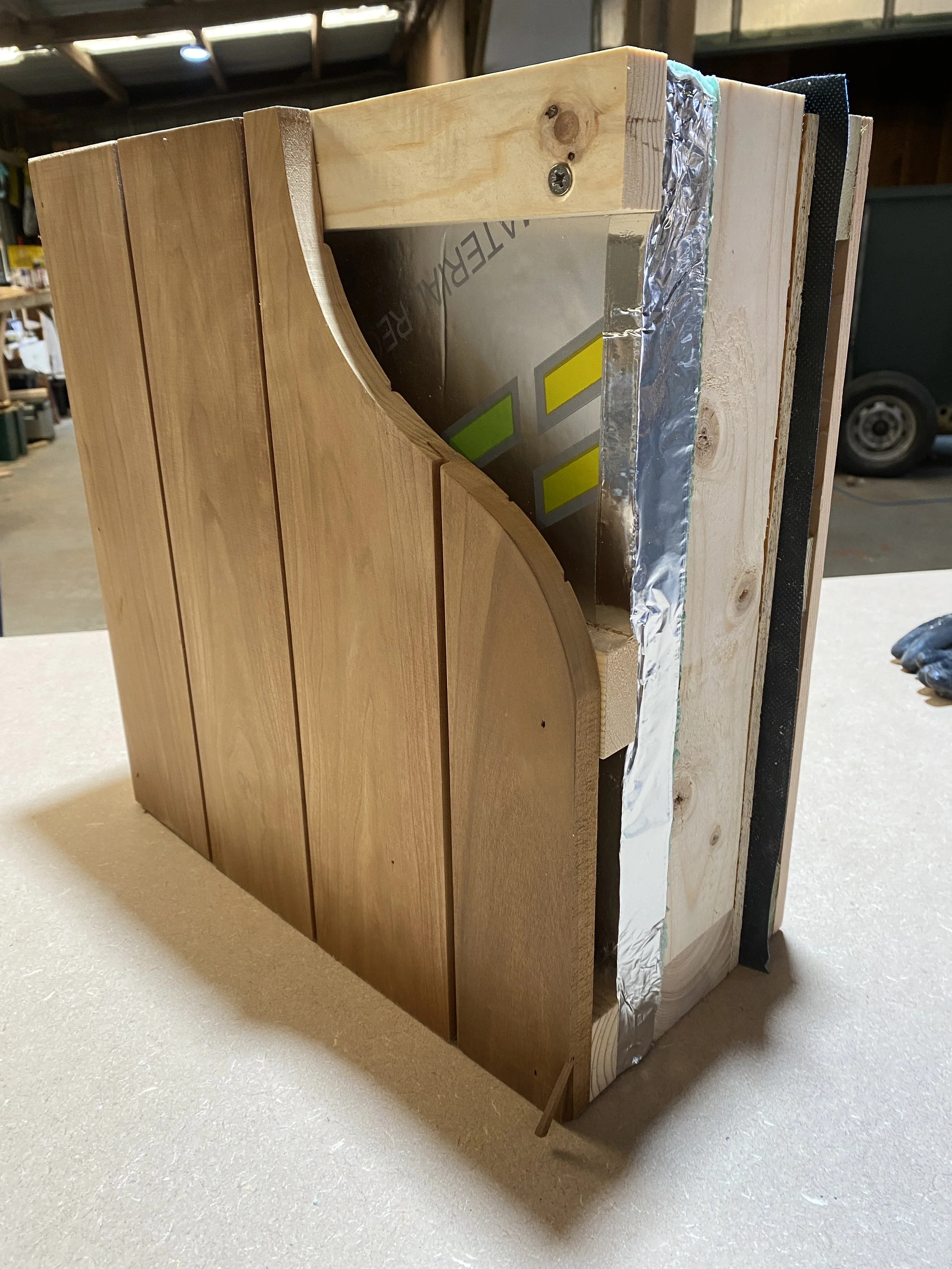As the temperature drops - Lets talk insulation!
For the first time this year the temperature has dropped to around freezing and it brought our minds to a very important part of sauna construction - Insulation.
Many traditional sauna designs are built as log cabins with no insulation but importently compared to many modern designs the walls were made from 100mm to 150mm logs. The benefit of of the super thick timber walls is that the thermal mass of the timber holds the heat well and once up to temperature is an efficient insulator. The down side is that when the timber is cold, particularly with very cold outside temperatures they can take many hours to warm up.
The need for good insulation is more apparent as the temperature drops outside and is all about efficiency and running costs. the more heat loss the harder the stove has to work to keep the temperature up, which means either more logs or more KW for an electric stove and in extreme cases a small electric stove may struggle to get up to temperature.
Sauna styles have changed considerably over time and many contemporary designs differ from traditional cabins in a few significant ways, Historically saunas had no, or very small windows and doors that you had to stoop to enter. The theory being that with the hottest air and steam pocket high up, opening the door meant less heat loss if it was low. Similarly large windows would cause bigger heat loss, the rule of thumb is that the stove should be specced up by 1KW per square metre of glass. Having said that there is nothing better that looking of the sauna at an amazing view outside and fortunately modern glazing and coatings ensure that heat loss can be minimised…but this does come at a cost.
Depending on how your sauna is used depends on how important the insulation is to you, many saunas including tents have no insulation and if you want to heat up and use you sauna in a couple of hour window they are fine. We like to use our sauna at various times throughout the weekend and having a sauna that holds its heat really well means that we can pop in and out hours apart and the temperature is always lovely and warm, Even a morning then afternoon/evening rounds are possible with minimal stoking and topping up the stove providing the doors are closed.
We are just about to launch our modular garden cabin range of saunas following a development period, we have 2/3 , 4/6 and 6/8 person options with wood fired or electric heaters, all handbuilt here in the UK with the same passion and attention to detail as our trailers.
Our standard wall thickness for a flat bed trailer or on our new range of garden cabins, even the smaller ones, is 200mm, this allows for 75mm mineral wool insulation between the timber studs and a 30mm PIR foil backed vapour barrier internally, by the time the battening, internal and external cladding is added the structure is a solid 200mm thick. There are actually 9 layers in the wall construction 1) Internal cladding 2) Perpendicular battens 3) Vapour barrier, taped and sealed 4) Insulated studs 5) OSB zero sheathing 6) Breathable membrane 7) vertical firrings for ventilation 8) Cross battening 9) Exterior cladding There is the opportunity to reduce this a little if space is very tight with alternative insulation and cladding options. Modern materials ensure that these cabins will stand the test of time, thermo wood cladding options give greater durability, stability and offer various aesthetic options to suit the surroundings.
So it is worth bearing in mind the importance of insulation if you are considering an outdoor sauna cabin - please feel free to call or contact us for further information or just to chat sauna .





